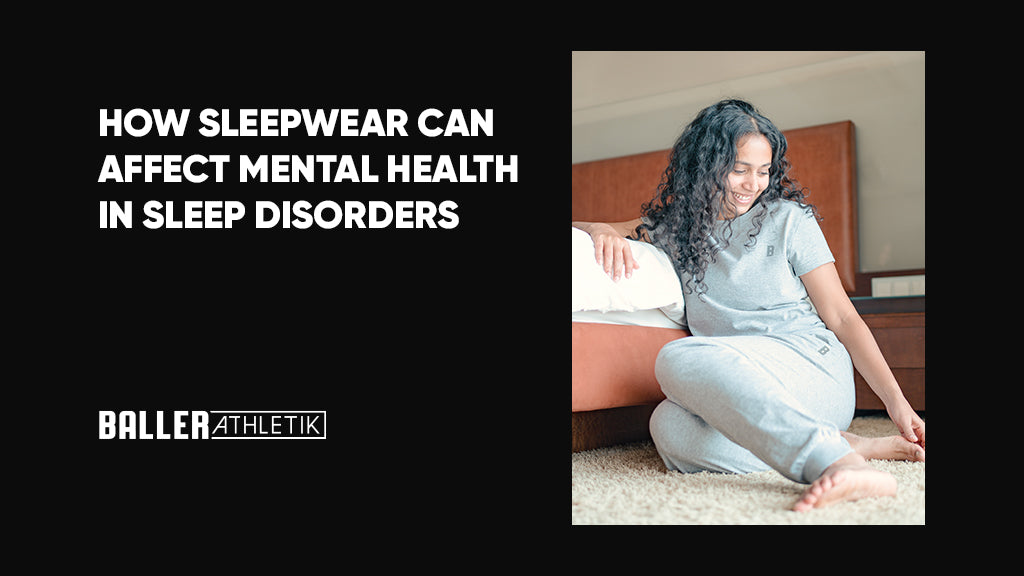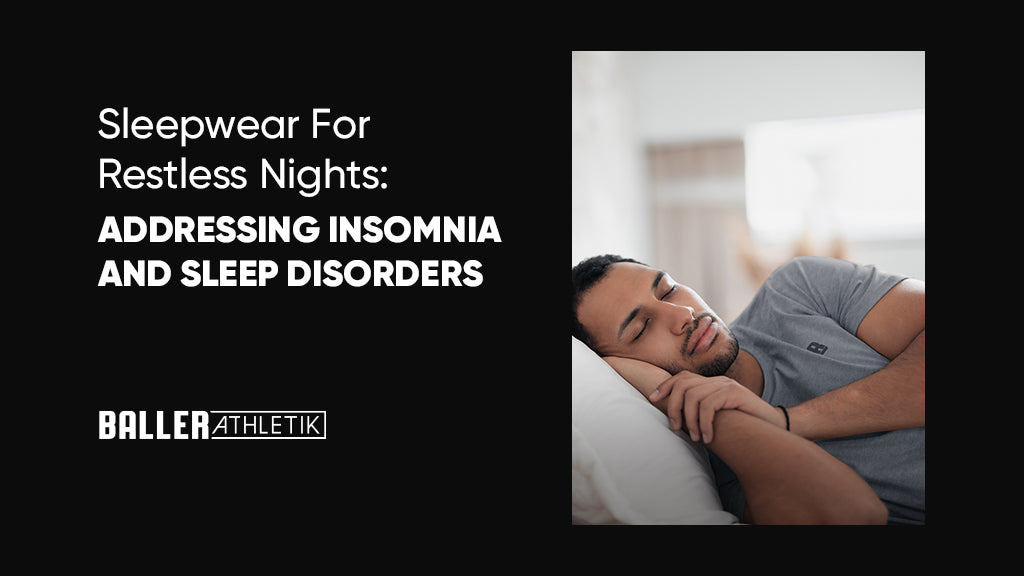In today's fast-paced world, many individuals find themselves struggling to get a good night's sleep. Insomnia and sleep disorders have become increasingly prevalent, affecting millions of people worldwide. Fortunately, there are various strategies to improve sleep quality, and one often overlooked aspect is the sleepwear we choose. The right sleepwear can significantly impact our ability to fall asleep and stay asleep throughout the night. In this article, we will explore the science behind sleep disorders, discuss the importance of comfortable sleepwear, and uncover innovative sleepwear solutions for insomnia. We will also delve into the crucial role of sleep hygiene and bedtime routines in promoting restful sleep. Additionally, we will explore natural remedies for insomnia and when it might be necessary to seek professional help. So, let's dive in and discover how sleepwear can contribute to addressing restless nights and promoting optimal sleep.
Understanding Insomnia and Sleep Disorders
Insomnia is a common sleep disorder characterized by difficulty falling asleep, staying asleep, or experiencing non-restorative sleep. It can have profound effects on one's physical and mental well-being, leading to fatigue, irritability, and impaired cognitive function. To effectively address insomnia, it is essential to understand its underlying causes and how it affects our sleep-wake cycle.
Insomnia can be a frustrating and debilitating condition that affects millions of people worldwide. The inability to get a good night's sleep can impact every aspect of life, from work performance to personal relationships. But what exactly causes insomnia? Is it just a matter of stress and anxiety, or are there other factors at play?
The Science Behind Sleep Disorders
Our sleep-wake cycle is regulated by internal biological mechanisms known as circadian rhythms. These rhythms dictate our sleep patterns and are influenced by factors such as light exposure, stress levels, and environmental cues. Disruptions to these rhythms can result in sleep disorders, including insomnia. Understanding the science behind sleep disorders can help us identify potential triggers and develop strategies to mitigate their impact.
One of the key factors that influence our sleep-wake cycle is light exposure. Our bodies are naturally attuned to the rising and setting of the sun, and exposure to natural light helps regulate our internal clock. However, in today's modern world, we are constantly bombarded with artificial light sources, such as smartphones, tablets, and televisions. These devices emit blue light, which can suppress the production of melatonin, a hormone that helps regulate sleep. This disruption in melatonin production can lead to difficulty falling asleep and staying asleep.
Another factor that can contribute to sleep disorders is stress. When we are under stress, our bodies release cortisol, a hormone that prepares us for a fight-or-flight response. While cortisol is essential in certain situations, prolonged exposure to high levels of cortisol can disrupt our sleep patterns. Stressful events, such as work deadlines, relationship problems, or financial worries, can keep our minds racing at night, making it difficult to relax and fall asleep.
Common Types of Insomnia
Insomnia can manifest in different forms, such as acute or chronic insomnia, and primary or comorbid insomnia. Acute insomnia is often situational and lasts for a short period, usually triggered by stress or life events. For example, if you have an important presentation at work the next day, you may find it difficult to sleep the night before due to anxiety and anticipation. However, once the event has passed, your sleep patterns return to normal.
On the other hand, chronic insomnia persists for three or more nights per week and lasts for at least three months. This type of insomnia is often more complex and may have multiple underlying causes. It can be caused by a combination of factors, including medical conditions, psychiatric disorders, or lifestyle choices.
Primary insomnia, as the name suggests, has no identifiable cause. It is a standalone sleep disorder that is not associated with any other medical or psychiatric condition. This type of insomnia can be particularly challenging to treat, as the underlying cause is unknown.
Comorbid insomnia, on the other hand, occurs alongside other medical or psychiatric conditions. For example, individuals with chronic pain conditions, such as fibromyalgia or arthritis, often experience difficulty sleeping. Similarly, individuals with mood disorders, such as depression or anxiety, may also struggle with insomnia. In these cases, treating the underlying condition is crucial in managing insomnia symptoms.
Recognizing the type of insomnia can guide treatment approaches, including the selection of appropriate sleepwear. For example, individuals with acute insomnia may benefit from relaxation techniques and creating a calming sleep environment. On the other hand, individuals with chronic or comorbid insomnia may require a more comprehensive treatment plan, which may include medication, therapy, and lifestyle modifications.
The Importance of Comfortable Sleepwear
When it comes to promoting good sleep, comfortable sleepwear plays a crucial role. The right sleepwear can help regulate body temperature, minimize discomfort, and create a conducive environment for relaxation. Let's explore how sleepwear affects sleep quality and discover key considerations when choosing the right materials for sleepwear.
How Sleepwear Affects Sleep Quality
Sleepwear that restricts movement causes itchiness, or traps body heat can significantly impact sleep quality. Discomfort and excessive sweating can disrupt sleep patterns and prevent the body from fully relaxing. On the other hand, comfortable sleepwear that promotes breathability and allows freedom of movement can enhance sleep quality and contribute to a more restful night's sleep.
Choosing the Right Materials for Sleepwear
When selecting sleepwear, it is essential to consider the materials used. Breathable fabrics such as cotton and modal are highly recommended as they allow airflow and prevent overheating. Additionally, considering the softness and texture of the fabric can further enhance comfort. Natural fibres, like bamboo, are not only comfortable but also eco-friendly, making them a popular choice for sleepwear. Avoid synthetic materials that may cause allergies or skin irritations, thus disturbing sleep.
Innovative Sleepwear Solutions for Insomnia
In recent years, the sleepwear industry has seen innovative advancements aimed at addressing insomnia. These solutions utilize specialized technologies and materials to provide enhanced comfort and promote better sleep. Let's explore two notable sleepwear solutions, temperature-regulating sleepwear, and weighted sleepwear.
Temperature-Regulating Sleepwear
Temperature-regulating sleepwear utilizes advanced fabrics that adapt to the body's needs, helping to maintain an ideal temperature during sleep. These fabrics can wick away moisture, regulate heat, and keep the body dry and cool. By promoting thermal comfort, temperature-regulating sleepwear can alleviate discomfort and contribute to a more restful night's sleep.
Weighted Sleepwear for Anxiety and Insomnia
Weighted sleepwear incorporates the principle of deep pressure stimulation, which has been shown to have calming effects on the nervous system. The gentle pressure applied by weighted sleepwear mimics the feeling of a comforting hug, promoting relaxation and reducing anxiety. This can be particularly beneficial for individuals struggling with insomnia related to anxiety or sensory processing difficulties.
Sleep Hygiene and Bedtime Routines
Creating a restful environment and adopting consistent bedtime routines are essential elements of sleep hygiene. These practices complement the effects of comfortable sleepwear and contribute to improved sleep quality.
Creating a Restful Environment
A quiet, dark, and comfortable bedroom can promote optimal sleep. It is essential to eliminate or reduce any disruptive elements, such as noise, excessive light, or uncomfortable bedding. Additionally, maintaining a cool temperature and ensuring proper ventilation can further enhance the sleep environment.
The Role of Bedtime Routines in Sleep Quality
Establishing a consistent bedtime routine signals the body that it is time to wind down and prepares it for sleep. Engaging in relaxing activities, such as reading a book or taking a warm bath, can help relax both the mind and body. Consistency is key, as our bodies thrive on predictable patterns. By incorporating these routines, we can enhance the effects of comfortable sleepwear and reinforce healthy sleep habits.
Additional Strategies for Combating Sleep Disorders
While sleepwear and sleep hygiene routines are valuable tools for addressing insomnia, additional strategies can also be beneficial. Let's explore some natural remedies for insomnia and discuss when it might be necessary to seek professional help.
Natural Remedies for Insomnia
For those seeking alternative approaches, natural remedies may offer relief from insomnia. Meditation, yoga, and herbal supplements like valerian root or chamomile tea have been known to promote relaxation and improve sleep quality. However, it is crucial to consult with healthcare professionals before using any supplements or alternative therapies.
When to Seek Professional Help
If insomnia persists despite implementing sleepwear and other self-help strategies, it is essential to consult a healthcare professional. They can evaluate potential underlying causes of sleep disorders and provide medical guidance, such as cognitive-behavioural therapy for insomnia (CBTI) or medication options if necessary. Identifying and addressing the root cause of insomnia is key to finding long-lasting solutions.
How Baller Athletik Sleepwear Helps
Baller Athletik Sleepwear emerges as a beacon of comfort and innovation in addressing the challenges of insomnia and sleep disorders. Infused with Far-Infrared and Bioceramic technology, this sleepwear goes beyond conventional solutions. The Far-Infrared properties contribute to improved blood circulation and relaxation, providing a soothing experience for those battling restless nights. Simultaneously, the Bioceramic infusion enhances the natural healing processes of the body, promoting a deeper and more rejuvenating sleep. By combining cutting-edge technology with the soothing comfort of high-quality fabrics, Baller Athletik Sleepwear stands as a promising solution for individuals seeking respite from insomnia, offering a pathway to a more restful and revitalising night's sleep.
In conclusion, addressing insomnia and sleep disorders requires a multifaceted approach, and often, the significance of sleepwear is underestimated. By understanding the science behind sleep disorders, recognizing the importance of comfortable sleepwear, and exploring innovative sleepwear solutions, we can take significant steps toward improving sleep quality. Additionally, adopting sleep hygiene practices and considering natural remedies can provide further support. Remember, when sleeplessness becomes a chronic issue, it is crucial to seek professional help, as they can provide tailored guidance and treatment options. Sleepwear for restless nights can be a powerful ally in our journey toward achieving restorative sleep and embracing a healthier lifestyle.




